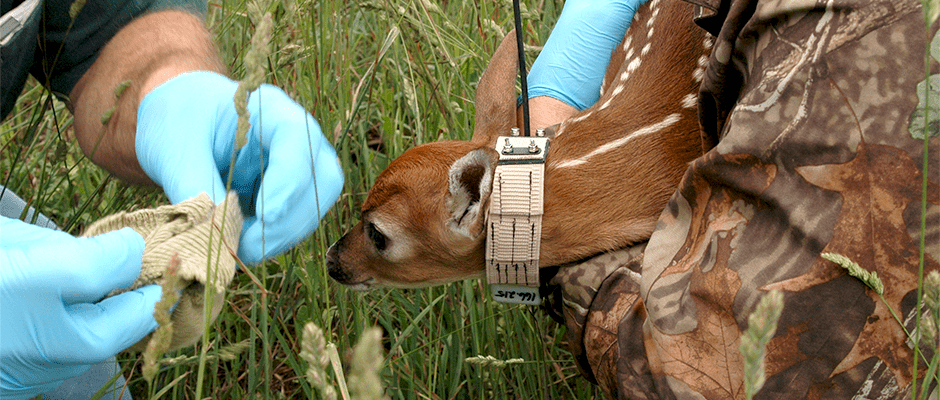Share this article
JWM: Agriculture may improve white-tailed fawn survival
White-tailed deer (Odocoileus virginianus) fawns have a better chance of avoiding mortality on agricultural land than they do in forests, according to new research.
In a study published in The Journal of Wildlife Management, researchers combined information from radio-marked fawns in two study areas in Pennsylvania with data collected and published in studies across North America from 29 deer populations in 16 states.
“Most fawn studies have one — maybe two — study areas,” said TWS member Duane Diefenbach, a U.S. Geological Survey Pennsylvania Cooperative Fish and Wildlife Researcher and coauthor of the study. “Looking across North America, we wanted to see if you could actually see a difference in survival.”
The team first looked at the relationship between the amount of agriculture on the landscape and fawn survival rates. Overall, they determined that fawns on agriculture land had a better chance of surviving to 6 months old than those in forested landscape. Fawn survival in forests was about 41 percent. But on agricultural land, fawn survival increased about 5 percent for every 10 percent increase in agricultural land.
After grouping study areas into categories of “mostly forest,” “mostly agriculture,” and “mixed forest and agriculture” they looked at what sources of mortality the deer faced. They classified mortalities as human-caused, predation and natural deaths excluding predation.
The team found that overall, predation — mostly by coyotes — was the greatest source of mortality on all landscapes. However, they found that fawns on landscapes with mixed forest and agriculture cover had lower rates of predator mortalities than forested landscapes. In areas with mixed forest and agricultural cover, though, the deer had higher proportions of human-caused mortalities, including vehicle collisions and hunter harvests.
“This suggests that landscapes that have a great amount of agriculture are going to see higher fawn survival, and antlerless harvest may have to be proportionately greater,” Diefenbach said. “If you’re going to have higher fawn survival, you’re going to have higher recruitment into the population, so to try to maintain stable populations, you’re likely going to need higher harvest rates in agricultural landscapes.”
TWS members can log into Your Membership to read this paper in the Journal of Wildlife Management. Go to Publications and then Journal of Wildlife Management.
Header Image: Biologists radio-collared 98 fawns in two study areas in Pennsylvania. When combining this data with past research, they determined deer fawns face more predator mortality in forests and more human-caused mortality on agricultural land. ©Pennsylvania Game and Fish








